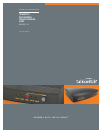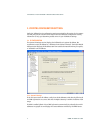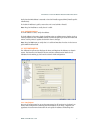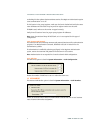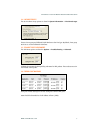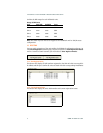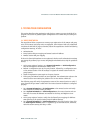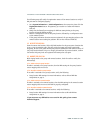TALKSWITCH VOIP NETWORK TROUBLESHOOTING GUIDE
8 WWW.TALKSWITCH.COM
The following steps will verify the registration status of the remote location to verify if
SIP port 5060 is configured properly:
1. Go to System Information -> VoIP Configuration at the remote site, then click the
Registration Status button. If registered, go to section 3.1 below and initiate a
VoIP call.
2. Verify that the firewall port mappings for SIP have 5060 pointing to the proxy
location private IP address settings.
3. Perform a configuration save at the proxy location, followed by a configuration save
at the remote location.
4. If the proxy and remote locations are now registered, the port mapping values at the
remote location were causing the problem. You can now initiate a VoIP call.
3.2 INITIATE THE VOIP CALL
From the remote site location, dial a valid VoIP number for the proxy server location that
is set to ring an extension only. This will verify the remote and proxy location SIP
mappings, as well as the public IP and proxy server IP addresses at the remote location. If
the proxy location doesn’t ring or no ringing is heard from the remote location, confirm
the remote and proxy units are registered and attempt the call again.
3.3 ANSWER THE VOIP CALL
With ringing heard at the proxy and remote locations, check for audio to verify the
RTP settings.
3.3.1 Audio received at proxy location
If audio is received at the proxy location, then the RTP settings in the proxy location
router mapping table are correct.
3.3.2 No audio received at proxy location
If no audio is received at the proxy location, verify the following:
• Proxy location RTP settings. For more information, refer to SIP and RTP Port
Assignments on page 5.
3.3.3 Audio received at remote location
If audio is received at the remote location, then the RTP settings in the remote location
router mapping table are correct and VoIP is properly configured.
3.3.4 No audio received at remote location
If no audio is received at the remote location, verify the following:
• Proxy location RTP settings. For more information refer to SIP and RTP Port
Assignments on page 5.
If you encounter any difficulties not covered in this guide, please contact
Technical Support.



